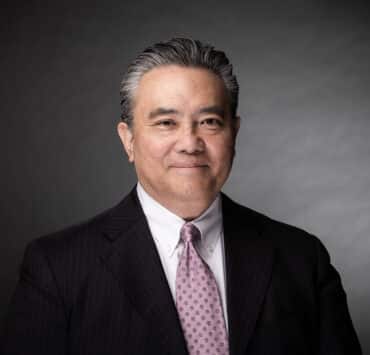|
Getting your Trinity Audio player ready... |
Waupaca Foundry is the largest producer of gray, ductile, austempered ductile, and compacted graphite iron in the world, and at the core of its internal benefits program sits Gene LeSage. Leading total rewards, LeSage took the position at the age of thirty-one, becoming the $1.5 billion company’s youngest director.
It’s an impressive feat but LeSage is no stranger to hard work. He grew up in a military family, with both of his parents serving in the Army for at least twenty-five years.
“At the tail end of my dad’s career, he was in finance, doing some controlling type stuff for the Army,” LeSage recounts. “I went to college initially for computer engineering, but had interest in the finance world, so I switched my major. I always wanted to end up in the corporate life.”
LeSage and his wife moved to her hometown in Waupaca, Wisconsin, where he became familiar with Waupaca Foundry. As the largest company in the area, LeSage knew he wanted to make a career there and accepted a role in the benefits department about seven years ago.
“Taking over the department at just thirty-one, I was able to really put in my beliefs and strategies for what we can do for employees in the company.”
Gene LeSage
The HR sector wasn’t where LeSage initially believed he would end up, but the move was rife with opportunities. “I [took the job] for a number of reasons,” LeSage explains. “For one, it was to get into the corporate life structure, and the other is there was a lot of seniority and retirements happening, so I knew if I worked hard and put my nose to the grindstone, I would hopefully get promoted.”
It didn’t take long for the higher-ups to recognize LeSage’s strong work ethic, and he has since then steadily risen the ranks. Today, as director of total rewards, he is tasked with strategic planning and developing, building relationships with brokers, vendors, and the team, then coordinating it all with the board of directors and executive leadership.
“My day-to-day type of stuff utilizes my finance background, and I’m someone who believes there’s always a solution through problem solving—that Kobe Bryant, [Michael] Jordan mentality of, ‘I’m going to work harder than the next person to succeed,’” LeSage notes. “I’m not only figuring out finances but problem solving on how to get better and what solutions we can implement.”
LeSage is also in charge of employment engagement, leading a team of three to help employees with anything healthcare related.
“Taking over the department at just thirty-one, I was able to really put in my beliefs and strategies for what we can do for employees in the company,” he says. “One of my first initiatives was implementing our first employer clinic. We knew it would help our employees by offering another solution for our employees and families to receive healthcare and make it our own.”
The clinic has expanded over time, and LeSage even hired a specialist to manage it so the concept can be expanded to the company’s other plant locations, with two more planned by 2024.
Another of LeSage’s major initiatives was to reinstate family healthcare in areas where it has been eclipsed by mainstream hospital styles. “It’s about taking a leap of faith,” he says. “I think we’ve been stuck in complicated healthcare, but when you talk to physicians, they just want to care for people. They don’t like corporate healthcare. I realized there was a disconnect. We have an opportunity to make a change.”
During the pandemic, LeSage notes the employment landscape changed considerably, and it’s the zero to one-year employees that most companies are struggling with. Turnover, he shares, really comes from the rookies on the staff.
“In my department, what we’ve seen is a pool of employees that we’ve all supported healthcare costs together. But now we’ve maintained our senior workforce with their families, which tend to be the more expensive piece of healthcare,” he explains. “Now COVID-19 has flipped that upside down and we have to pay attention to what are our top spenders, and what’s going on. And now we must be more laser focused on specific solutions to solve those problems.”
Looking toward the next year, LeSage sees a large focus being on diabetes and how to get the Type 2 population to a point where they no longer need to rely on medication or doctor visits to be healthy.
“I think we’ve been stuck in complicated healthcare but when you talk to physicians, they just want to care for people. They don’t like corporate healthcare. I realized there was a disconnect. We have an opportunity to make a change.”
Gene LeSage
“Mental health is going to be another one that will be a big focus,” he adds. “We’re a heavily male population in rural America, so most people don’t like to talk about mental health, but it’s scary. The data is out there, the trends are out there, and if we continue to not talk about it, it will continue to be an issue.”
He’s also working with the state of Wisconsin to help politicians and leaders understand what healthcare actually is, how it’s paid, and who pays for it.
“We need to show why we need to do things differently, because it’s getting out of hand,” LeSage says candidly. “Within that, one solution I want to implement is direct employer pricing. For instance, if we have an employee who needs a hip replacement, if I go to the local healthcare network, it might be $60,000. Because Waupaca Foundry is self-insured, we might end up paying $50,000 out of our pocket for that employee.”
However, if the company can partner with the local surgery center, the surgery might only be $40,000 and it would only have to pay $30,000 since the employee has a $10,000 max out of pocket.
“Those are real cost savings, and the employee will typically experience the same if not better surgery care with no readmission,” LeSage explains. “We had a study done from UnitedHealthcare that our trend in healthcare spend is down 7 percent over the last four years compared to the industry average of a 4 to 5 percent increase.”
His thoughtful and committed approach carries through in his day-to-day mannerisms. LeSage notes that when he walks around the office, his quote is “High five, look alive.” He’s high-energy, high-performing, and has high expectations for his team as well.
“I know they work hard, and I respect the work hard/play hard life,” he says. “But when they are here, I want smiles, I want communication; I don’t want excuses. If you make a mistake, let’s fix it and move forward.” It’s a philosophy that has helped LeSage spend the majority of his career at the leadership table.

